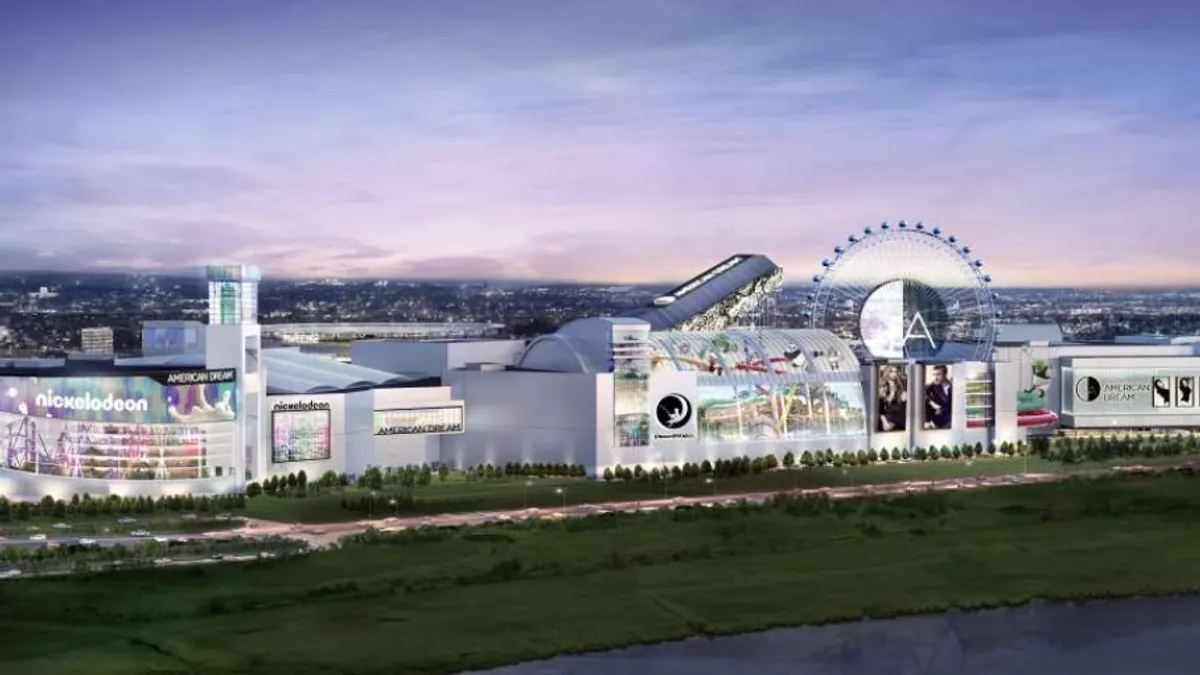A new report points to the fact that U.S. construction projects are not only getting larger, they are trending heavily toward a concentrated handful of metropolitan markets.
In fact, the top three states for planned megaproject spending in the next 10 years — California, Texas and New York — represent 40% of the national total, according to "Megaprojects: Changing the Conversation" from consultancy FMI Corp. The study's authors also predict that over the next three to five years, five metropolitan markets will make up one-fifth of total megaproject construction in the U.S.: New York, Los Angeles, Dallas, Houston and Washington.
The reasons behind this trend are many, Brian Strawberry, FMI senior economist, told Construction Dive. Because large metropolitan markets have a greater value of industry expansion and job creation, they are ripe for large projects, he said.
"Labor and supply chain capacity in our largest and most established [metropolitan statistical areas] are better able to manage the demands of a megaproject compared with those resources available in rural areas or smaller metros," he said.
In addition, the growth of populations in urban areas has necessitated complex construction projects to help solve problems like transportation and housing. But sometimes these projects cause problems of their own, Strawberry cautioned.
"The noteworthy challenges and risks found across all high-growth MSAs are that those markets are also most likely to be faced with competing high-profile projects and/or megaprojects, straining resources while also potentially compromising schedules and budgets across the board," he said.
The first phase of one of these large projects, the $5.2 billion American Dream retail and entertainment complex in the Meadowlands area of New Jersey, is set to open later this month. Other megaprojects underway near urban centers include the new $2.5 billion Delta Airlines terminal at LaGuardia Airport, the $2.5 billion Potomac Shores mixed-used development and the $2.5 billion Westside extension of the Purple Line in Los Angeles.
Larger and more complex
The study's authors reported that megaprojects are growing larger and increasing in number and complexity. The annual value of U.S. megaproject starts increased from 3% to approximately 33% of all U.S. construction project starts over the past decade, according to the study.
Furthermore, FMI expects total U.S. construction put in place on megaprojects to exceed $2.5 trillion, reaching more than $300 billion per year (or roughly 20% of annual spend) over the next decade.
The study’s authors used Oxford University economist Bent Flyvbjerg’s definition of megaprojects, which says they are large-scale, complex ventures that typically cost $1 billion or more and may take years to develop and build, involve multiple public and private stakeholders, are transformational and impact millions of people.
As part of its research, FMI investigated best practices associated with megaprojects by interviewing 22 industry stakeholders — including owners, contractors, designers and academics — who have been involved in both successful and unsuccessful megaprojects. Five themes emerged as key to delivering successful megaprojects:
- mutual trust among all stakeholders
- a culture of cohesion and collaboration
- transparent and authentic leadership
- nimble and autonomous teams
- educated and experienced owners














